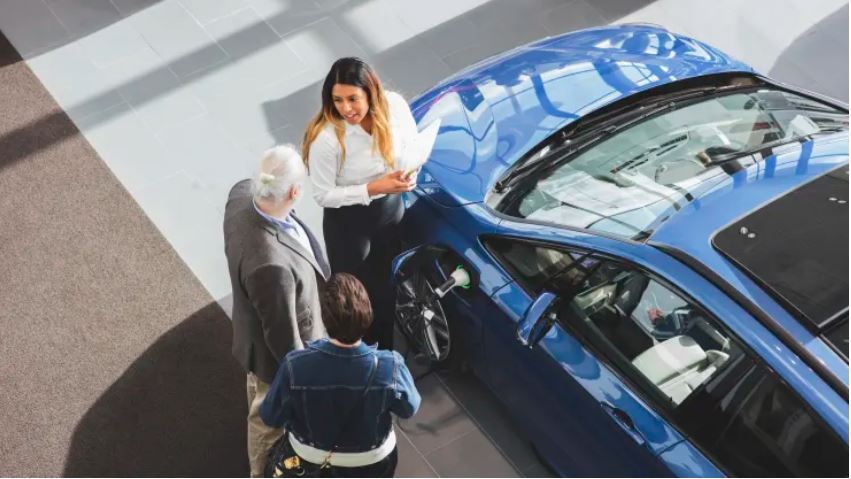Should you buy a car in 2022? Here’s what consumers need to know to beat high vehicle prices
Car prices continue to fluctuate rapidly. Here’s what to keep in mind if you’re buying one in 2022.
khodrocar - Buying a car continues to be a challenge amid record-high inflation, support shortages and increasing interest rates. Since the beginning of the Covid-19 pandemic, new and used car prices have risen dramatically, leaving buyers with limited choices for finding affordable vehicles.
According to Kelley Blue Book, the average price of a new car reached an all-time high of $48,301 in August — up nearly 11% compared to last year. And with another interest rate hike from the Federal Reserve expected to hit soon, a new car is quickly becoming a luxury few Americans can afford.
That said, there are still some signs of hope for those looking to purchase an affordable vehicle this year. Below, Select takes a closer look at how consumers can find the best deals without spending more than their budgets allow.

How to strategically buy a car in 2022
Of course, the real question is: Should you buy a car now or wait until 2023?
Zach Shefska, co-founder and CEO of YAA, an advocacy website for car buyers, says you should wait to buy a car since prices are going to remain high due to low inventory.
According to a recent report by Cox Automotive, the number of new and unsold vehicles available held steady at 1.09 million. While this was technically a small improvement over last year’s 1.07 million vehicles available, the numbers are still nowhere near what they used to be prior to the pandemic, when there were easily 2.55 million vehicles available in July 2020 or 3.69 million vehicles available in July 2019.
Unfortunately, Shefska says it’s going to be a long time before manufacturers can get that number back up, but there are several ways to give yourself a bit of an advantage when it’s time to purchase your next vehicle if you simply cannot wait any longer.
Track car prices aggressively before you buy
First, Shefska recommends doing some solid research on the car you like and searching for other similar vehicles that have recently sold in your area — the more research you do, the more you will feel confident when you step into a dealership. You can find free tools to do this on websites such as YAA, CarGurus and Cars.com.
If a dealership pushes back on your desired price point, mention the research you’ve done about other local and comparable offers. If they continue to press you and don’t give any leeway, consider taking that same research to a different dealer and trying again there.
Buyers have leverage for some used vehicles
Shefska also says used car prices have been dropping since the start of the summer and may continue to fall. That’s because wholesale prices have decreased, paving the way for dealerships to also be able to lower their prices. That said, there was a small spike mid-summer, which brought the average used car price to just over $28,000 in July 2022.
Kelley Blue Book states that real savings can be had when it comes to purchasing larger vehicles such as SUVs and pickup trucks since consumers have veered away from less full-efficient vehicles amid recent spikes in gas prices. Savings on smaller compact cars, meanwhile, can be more difficult to find.
According to Shefska, if you’re in the market for a pre-owned vehicle, consumers are in the driver’s seat. He strongly recommends that shoppers track down vehicles that have been sitting out on the car lot for more than 60 days — the longer the car sits there, the more incentivized the dealership becomes to sell it.
Come to the dealership with financing or cash in hand
It’s well known that car dealerships make large profits by pairing their cars with loans on their premises. By coming into a dealership with financing from your local bank or credit union — or cash in hand — you will have a lot more leverage to negotiate the price of the car down.
To find an auto loan in your area, you should first check to see if your own bank or credit union offers them. It’s also best to shop around online so you can find a lender with the best available interest rate and repayment terms that work for you.
If you have good to excellent credit, consider working with one of the following lenders for your auto loan, since they all offer a reasonable APR, or annual percentage rate:
PenFed Credit Union (APR as low as 5.24% on new cars)
Bank of America (APR as low as 3.99% on new cars from a dealer)
Alliant Credit Union (APR as low as 4.35% on new cars)
Select has detailed the pros and cons of using a personal loan versus an auto loan when purchasing a car. You can check out Select’s personal loan marketplace to compare loans and find the one that has the best rates and terms for you.
Before applying for a new auto loan, check your credit score to see if you might qualify for a low-interest rate loan. You can also check and monitor your credit score with one of the following credit monitoring services:
Latest News


